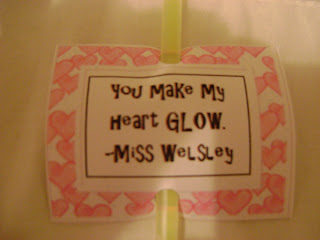My mentor teacher (who is a WONDERFUL teacher) has these work stations so organized and the students know how to do everything that is expected of them at each center. Anyone who walked into the room during work stations would be impressed and surprised by how hard working and responsible the 22 first graders are!
I will try to provide more details on the centers as I take more pictures.
1. Drop Everything and Read (D.E.A.R): At this center students work at their desks. In our classroom we use the time for students to complete unfinished work from the morning/ homework they did not complete or to read a book at their desk!
2. Computers: At the computer station students can work on starfall.com to play learning games.
3. Pocket Charts: At pocket charts the children separate different words into categories according to the phonics focus for the week. Last week was bossy r words "ar" "or" "er, ir, ur" Students would place the word "car" in the ar column, the word "corn" in the or column, and "soccer" in the er, ir, ur column.
4. Big Books: At the big book station the students read big books to each other using pointers to follow the words. These books are usually ones that have already been read aloud in class.
5. Smart Board: My mentor teacher has a variety of activities dealing with phonics that the students do on the smart board. I will try to make a separate posting of these soon!
6. Library: At the library students can get comfy pillows and read all different kinds of books. My mentor teacher usually makes a basket of content area books (fractions, MLK, money, life cycle). There are also informational books, entertaining books, and persuasive books.
7. Poetry: In the poetry station students read and copy different poems and riddles.
8. Listen to Reading: In this center students may listen to stories on tape. There are two sets of headphones.
9. Writing: In the writing station there are several types of paper students may pick to write on. My mentor teacher was very creative and uses class pictures as writing prompts. She prints out photos and places them in a drawer then the students may pick a picture and describe what is happening in their photo.
10. Word Work: In the word work station students may practice their spelling words using magnetic letters, completing a word search in magazines or books, or rainbow writing (write words in all different colors).
11. Buddy Read: In this last station the students work in pairs and each have a copy of a book. They can point and read to each other. My mentor teacher also puts character cut outs in the station so the students can act out the story! (I will post some of these later also)
How to Make 11 Centers/ Work Stations Functional
1. First teach students what to do in each center and make sure they know what is expected of them.
2. Place students in groups of 2.
3. Teach students how to get started and how to clean up each center. Make sure they know how to put EVERYTHING back right where they found it.
4. Teach students the rotation of centers.
5. We send our students to 3 centers a day. They have a rotation that the students all know.
6. Set the timer for 15-20 minutes (depending on what can fit) and allow students to stay at centers for this amount of time. When the timer goes off, reset it for one minute. Give students exactly one minute to clean everything at their center and move to the next center. This is the KEY to making the centers work so well!
7. Make a tray where students can turn in their work from the centers. This ensures they are working hard. Every few weeks pick some student work from centers to celebrate! This give students something to look forward to if they do their work the correct way.
If students are taught to be responsible in these 11 centers and are capable of cleaning the center up on their own then the teacher gets time to work with reading groups!






































